Fakarava Atoll 3

Bondi Tram
Peter Colquhoun and Sandra Colquhoun
Fri 29 Jul 2011 23:49
|
We went back to the north end of the atoll and enjoyed an interesting visit
to a pearl farm. This farm
produces 300,000 market quality pearls a year, and cannot keep up with
demand.
One of the main daily activities is bringing in batchs of oysters and
washing them to remove parasites.
They use an Australian made washer which is somewhat like a large
industrial dish washer.
  Here oysters are taken out of their racks for washing...the finger points
to a parasite.
 Here a fresh batch of oysters are opened prior to seeding.
 These are the racks made of a special fibre which does not rot in salt
water.
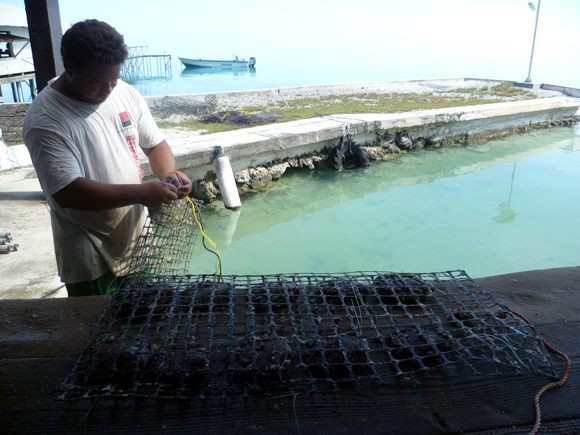 This woman is seeding the pearls using a scalpel to cut a small
incision.....
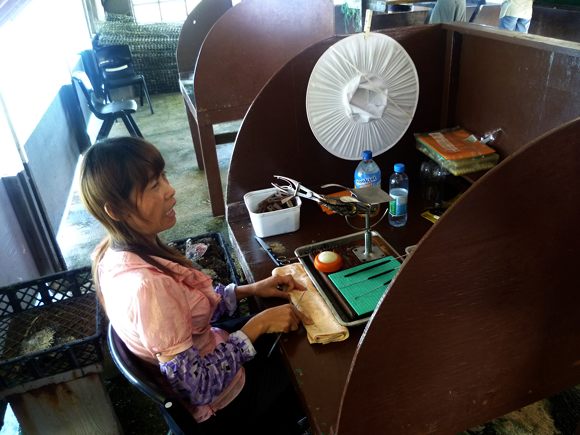 ....in to which she places the seed. The seed is pieces of shell from
Mississippi river oysters (yes,
all the way from the USA, nothing else will work as well). The bits
of shell are coated in a yellow
antibiotic to prevent infection (see the yellow balls in the blue trays on
the bottom right.
They obtain 3 crops from each oyster. The first is after 18 months,
and they have a low failure rate of
14%. The second crop is after another 12 months, but the failure rate
is much higher. The third crop
after another 12 months has a bigger failure rate, but this is when
they get the largest pearls.
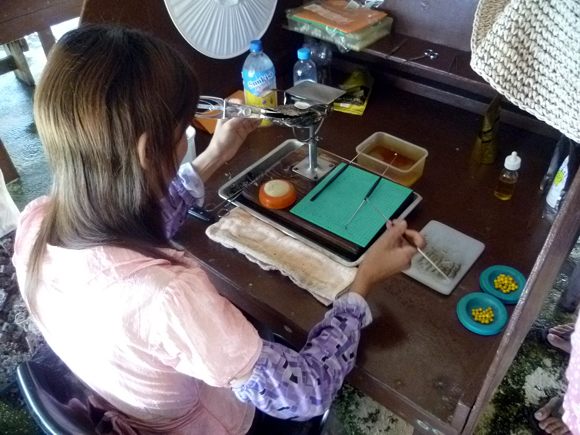 The oysters are hung offshore from buoys at a depth of 30 metres.
Here the oysters that have been
washed are hung from the wharf pending transfer.
   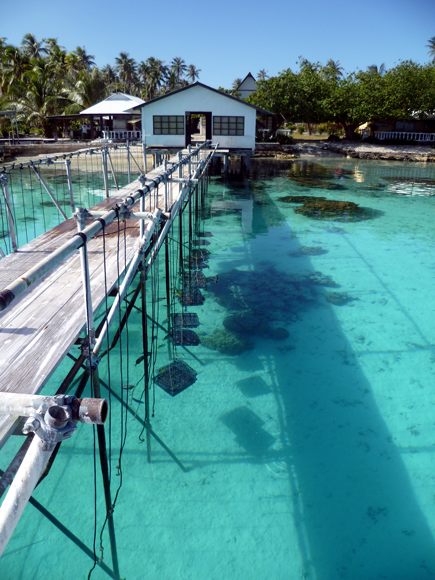 Oysters passed their productive pearling life have their muscle removed and
sold for eating while the
shells are sent to Korea to make shirt buttons. They wait until 20
tonnes of shell are accumulated
before shipping. That's a lot of oysters.
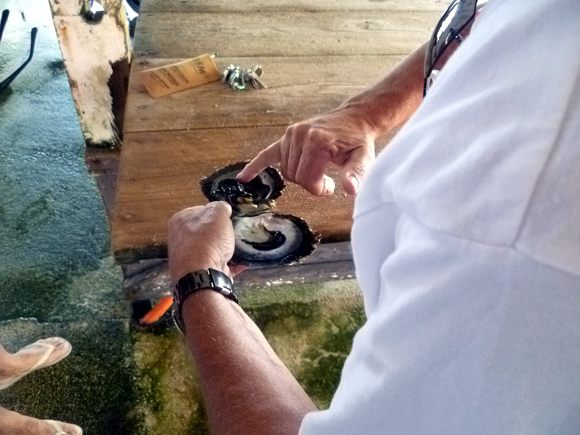  They have a small showroom at the farm as well as one in the village.
  These pearls are graded by size, lustre, colour and ''roundness".
This tray has pearls priced at
20,000 Polynesion francs each, about $235 Australian dollars.
 This is the largest pearl they have produced and is not for sale.
Others a little over half the size were
80,000 francs each......
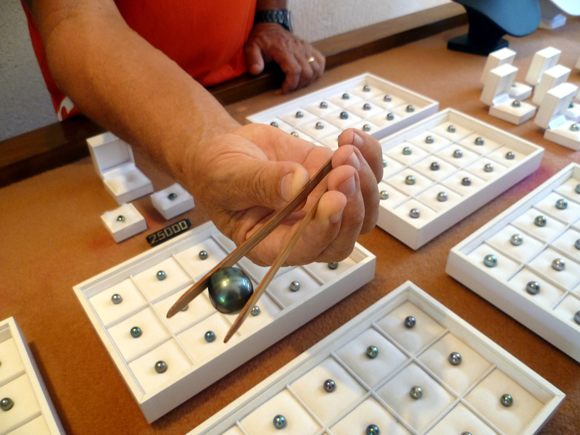 ....so you can imagine the price of these necklaces.
 A perfectly still and calm day, such that it is hard to see where the sky
and water meet.
 This is a shed for drying coconuts for copra. The roof slides
closed to keep the rain off.
 Sandra's souvenier of the Tuamotu islands.
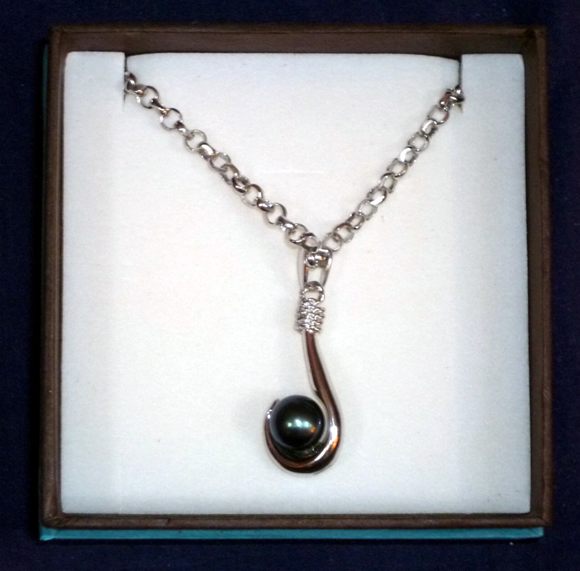 |